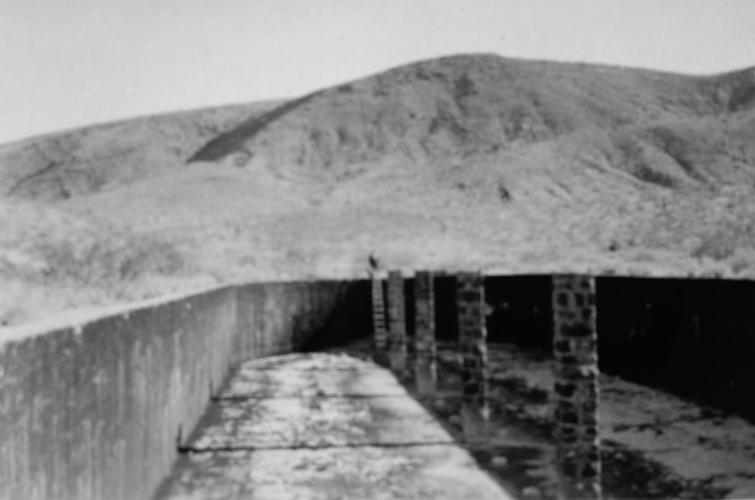Although not a major producer, the White Hills, a small range of mountains 50 miles northwest of Kingman is noted for a multitude of small mining operations making up the Indian Secret mining district in Mohave County.
The hills composed of medium-grained gneissoid granite are aptly named because of their light-colored appearance.
The Hualapai and neighboring Paiute Indians used the iron and manganese oxides commonly found in the White Hills for face pigment. Mining activity on the western flank of the White Hills heightened in 1892 when a Hualapai Indian known as Jeff discovered rich silver chloride vein deposits.
He later informed Henry Schaefer, a local miner prospecting in the Gold Basin area, of his discovery. Schaefer invited John Burnett and John Sullivan to exploit the site that became known as Schaefer’s Treasure. In some cases the ore was said to run as high as 1,000 ounces of silver per ton. The mining boom began with a 10 stamp mill. Ore was shipped to the Kingman smelter along with purchase transactions. Profitable mines included the Chief of the Hills, Monster, Hulda, Bonanza and G.A.R. Lode.
Initial shipments averaged 3,000 ounces of silver per ton. Soon R.T. Root and D.H. Moffatt, a Denver syndicate later known as the White Hills Mining Co., purchased the property for $250,000 in 1894. They added to their investment with the purchase of mining equipment needed to fully exploit the property that would soon include 27 miles of tunnels worked by 600 miners.
Water-related challenges emerged including the scarcity of on-site potable water combined with the excessive cost of water haulage. Brief torrential rains instigated gully washers that damaged the town’s buildings.
Economic challenges caused the White Hills Mining Co. to be acquired by an English company in 1895 for $1.5 million. White Hills became the largest mining camp in Mohave County consisting of a population of 1,500 and 15 mines worked within a mile of the camp.
In 1895, it was composed mostly of tents serviced by several saloons, restaurants and land staked by squatter’s rights. Additional conveniences included running water, electric lights and telephones.
Mine development included a 40-stamp mill, hand-built water reservoir comprising 7 miles of 7-inch wooden pipeline and an improved road system. Declining silver prices, excess operating costs coupled by either pinched-out or faulted-off rich ore-shoots forced the mine to close in 1907 after having produced 8 million ounces of silver.
The average depth of the mining properties at that time ranged from 50 to 500 feet. A massive flood destroyed the town in 1909.
Later exploration and development of the property included operations undertaken by Floyd R. Brown in the early 1930s resulting in a shipment of 732 tons of silver ore at a profit of $40,000 based on a 60-cent per-ounce silver price and 80 percent mill recovery.
During the 1970s, the underground workings of the G.A.R. Mine were improved by the Consolidated Mineral Inc. along with a 370-foot timber lined vertical shaft and new head frame. A batch-leach plant and mill were built on site. Diamond and percussion drilling, trenching and surface leaching to treat the old mine tailings found on the White Hills Mining Properties were attempted by the Arizona Silver Corp. Technology enhancements involved an X-ray fluorescence scanner and probe developed by United Nuclear Industries used to detect silver on the Hulda mine extensions in 1982. Production included the processing of 20-pound Dore bars on site containing 95 percent silver mixed with 3 ounces of gold.
Today the flat valley between Arizona 93 and the White Hills is sought over by developers.
The value being that the area holds interest for retirees who wish to acquire affordable lots of land within a 45-minute drive to Las Vegas.





